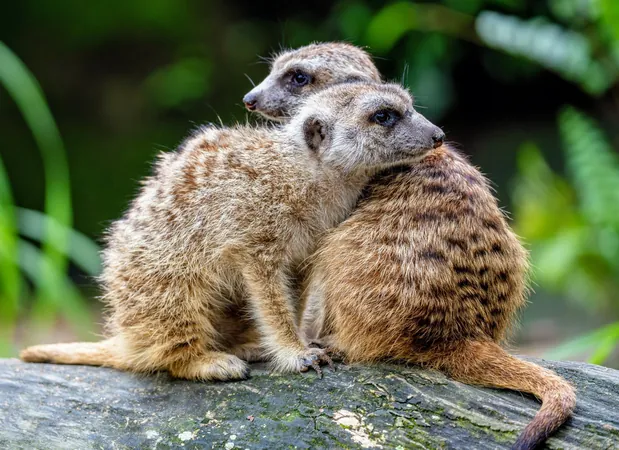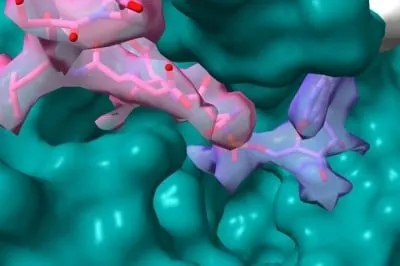
Unlocking Nature's Secret: The Hidden Patterns of Animal Movement Across Continents
2025-05-18
Author: Jia
The Illusion of Chaos in Nature
At first glance, animal behavior appears wonderfully chaotic—predators pounce, prey scatter, and herds engage in their daily routines seemingly at random. However, groundbreaking research unveils a hidden order guiding these creatures, revealing a fascinating connection among species across the globe.
A Global Study of Diverse Species
The study spanned three vastly different ecosystems: the arid Kalahari Desert, where meerkats dig in the sand; the lush rainforests of Panama, where coatis lounge high in the trees; and the expansive savannah of Kenya, where spotted hyenas roam. Despite their diverse characteristics—body size, diet, and behavior—these species share a common thread: the way they transition from one activity to the next.
Behavior Tracking with High-Tech Tools
Researchers at the Max Planck Institute of Animal Behavior employed accelerometers to monitor the movements of these wild animals, utilizing the same technology found in smartphones. The devices captured minute movements at high frequency over extended periods.
Discovering Unexpected Behavior Patterns
The findings revealed a surprising trend: the longer an animal engages in a particular behavior, the less likely it is to switch to another activity. For instance, a meerkat might remain still, scanning its environment before digging for food, while a coati may alternate between climbing and resting. This trend presents a striking similarity across species, suggesting a universal behavior algorithm.
Counterintuitive Insights
This discovery challenges traditional assumptions about animal behavior. Researchers had expected that as an animal like a hyena walked for an extended time, it would be more inclined to stop. Instead, they found that animals demonstrated greater commitment to their current action the longer they engaged in it, a phenomenon researchers termed a 'decreasing hazard function'.
Understanding Predictivity Decay
The study also explored 'predictivity decay,' which examines how effectively an animal’s current behavior can forecast its future behavior. Over time, predicting future actions becomes increasingly uncertain due to shifts and external influences. Nevertheless, a consistent pattern of predictivity decay was observed among all species studied, hinting at a deeper underlying structure.
Why Do These Patterns Exist?
Researchers suggest two key explanations for these behavioral patterns. The first is positive feedback: remaining in a behavior like resting can be comfortable or provide a sense of safety, making it easier to continue. The second theory involves complex decision-making, as animals process various signals—hunger, danger, social interactions—each operating on different rhythms that may overlap.
A Wealth of Questions Remain
This study opens new questions: Do these patterns extend to solitary animals or those in different life stages? How do stressful conditions affect behavior? Could prolonged states of behavior serve to conserve energy or enhance group coordination? Meg Crofoot, Director of the Department for the Ecology of Animal Societies, noted that this research illuminates potential hidden structures in animal actions, linking diverse species through shared behavioral rhythms.
Concluding Thoughts on Animal Behavior
While animal behavior often appears unpredictable, this research reveals a fascinating underlying order connecting species as varied as hyenas, coatis, and meerkats. The exploration into these patterns continues, promising more revelations about the intricacies of life across our planet.




 Brasil (PT)
Brasil (PT)
 Canada (EN)
Canada (EN)
 Chile (ES)
Chile (ES)
 Česko (CS)
Česko (CS)
 대한민국 (KO)
대한민국 (KO)
 España (ES)
España (ES)
 France (FR)
France (FR)
 Hong Kong (EN)
Hong Kong (EN)
 Italia (IT)
Italia (IT)
 日本 (JA)
日本 (JA)
 Magyarország (HU)
Magyarország (HU)
 Norge (NO)
Norge (NO)
 Polska (PL)
Polska (PL)
 Schweiz (DE)
Schweiz (DE)
 Singapore (EN)
Singapore (EN)
 Sverige (SV)
Sverige (SV)
 Suomi (FI)
Suomi (FI)
 Türkiye (TR)
Türkiye (TR)
 الإمارات العربية المتحدة (AR)
الإمارات العربية المتحدة (AR)